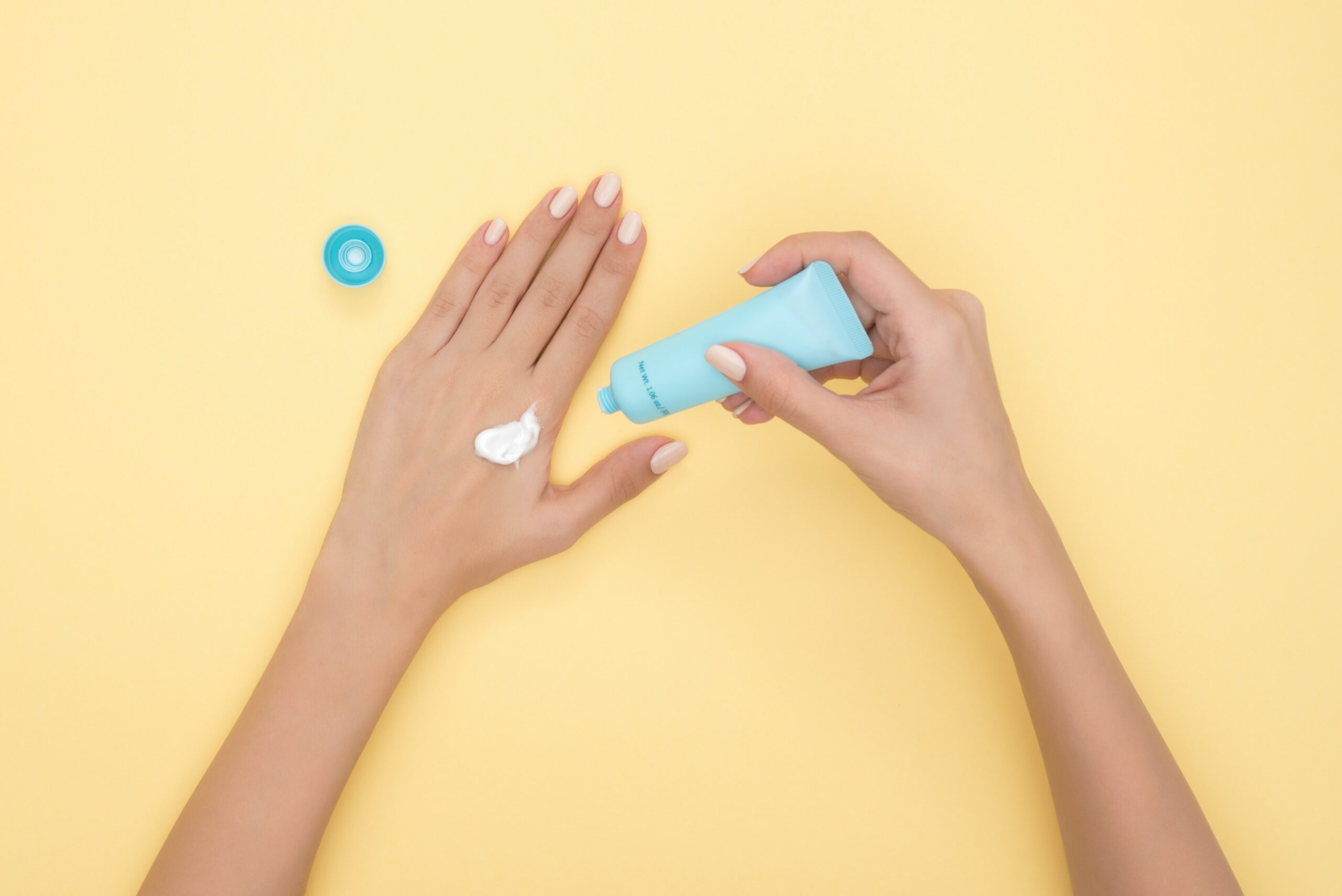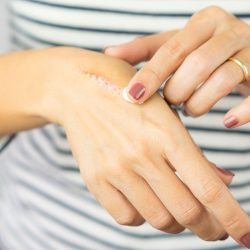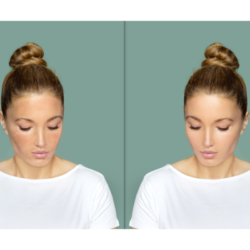If you suffer from acne, there are a number of products that can help you tame your skin. Cleansers, masks, lotions, serums, sunscreens and creams: there are so many options available to you! The effectiveness of these products lies in their choice of active ingredients, such as vitamin A or vitamin C. Although the spotlight is on skin-lightening and anti-acne ingredients such as salicylic acid, azelaic acid remains a more ‘discreet’ ingredient. Focus on the properties of this acid, which is gentle on the skin but tough on blemishes!
What is azelaic acid?
Azelaic acid is a natural acid derived from cereals such as wheat and barley, which has real anti-inflammatory and antimicrobial properties. In fact, it’s the active ingredient of choice for treating acne and rosacea. What’s more, it helps prevent future outbreaks while eliminating the bacteria that can develop inside the skin’s pores.
The products available on the market come in various forms: foam, gel, serum and cream.
How can it help my skin?
Azelaic acid acts as a gentle, no-rinse exfoliant. This makes it an excellent choice for people with rosacea or sensitive skin! It cleanses pores while smoothing the skin’s surface. A real antioxidant concentrate, it helps reduce skin sensitivity and the number of imperfections.
Azelaic acid inhibits tyrosinase, which means it helps prevent and treat hyperpigmentation spots (such as the purplish spots left by acne pimples). It’s the ideal ingredient for evening out the complexion! Although it’s very good at unclogging pores, it’s much gentler than other active ingredients like salicylic acid: it’s the perfect remedy for reactive and sensitive skin.
What are the benefits of this acid?
All azelaic acid-based products can make a big difference to skin structure and tone.
Secondly, it helps reduce the appearance of imperfections such as residual marks left by pimples or any other type of skin discolouration.
Secondly, it helps to smooth skin texture, resulting in a more even, luminous complexion.
This skin-friendly acid also has soothing properties that can reduce skin sensitivity and the intensity of redness.
Can azelaic acid reduce the appearance of my scars?
Azelaic acid is often used to treat acne scars alongside active outbreaks. Because it boosts skin cell renewal, azelaic acid can reduce the intensity of scars. A formidable weapon in slowing down the synthesis of melanin, it prevents the skin from producing pigments that can lead to spots on the face.
The question of the effectiveness of azelaic acid in reducing the appearance of scars, particularly those associated with acne, is of great interest to those seeking to improve the appearance of their skin. The use of azelaic acid in the treatment of acne scars is supported by its ability to promote cell renewal. This accelerates the skin’s regeneration process, helping to visibly reduce the intensity and pigmentation of scars.
What is the best anti-pigmentation spot active ingredient for sensitive skin?
One of the key benefits of azelaic acid is its ability to reduce melanin synthesis. By acting as an inhibitor of tyrosinase, a key enzyme in melanin production, azelaic acid helps prevent the formation of post-inflammatory pigmentation. This is particularly beneficial for people suffering from hyperpigmentation, where the skin tends to produce excess pigment in response to inflammation, often seen after acne breakouts.
Azelaic acid is also distinguished by its anti-inflammatory properties. These properties not only help to reduce the redness and inflammation associated with existing acne, but also play a role in reducing the appearance of scars. By soothing the skin and reducing inflammation, azelaic acid minimises the risk of new scars forming and helps to reduce existing ones.
Another remarkable aspect of azelaic acid is its gentle exfoliating effect. This helps rid the skin of dead cells and promotes the emergence of a fresher, more even skin layer. Regular exfoliation is essential to reduce the visibility of acne scars and promote healthier, more balanced-looking skin.
Does this active ingredient work quickly?
Significant skin improvement can be seen after six weeks of daily use. As long as you take the necessary precautions to help azelaic acid work optimally: Sun protection is compulsory, and every day! Good moisturising in the morning and evening and, above all, using the ‘right’ dose of active ingredient, i.e. the equivalent of a pea for the whole face. No more than that!
Do I need to apply sun cream every day?
When using azelaic acid, it is strongly recommended that you use sun protection. Azelaic acid can make your skin more sensitive to the sun‘s rays. It is therefore essential to protect your skin from damage caused by UV rays by using a broad-spectrum sun cream with an adequate sun protection factor (SPF). Opt for an SPF of at least 50 and make sure you apply it generously to all exposed areas of your skin.
Using the right sun protection will help prevent UV damage such as premature skin ageing, darkspots and increased risk of skin cancer. This is all the more important when using topical products such as azelaic acid, which can make the skin more vulnerable to the harmful effects of the sun.
Don’t forget to reapply your sun protection regularly every two hours, especially if you are exposed to the sun for long periods or sweat a lot. Good sun protection combined with the use of azelaic acid will help to keep your skin healthy and prevent skin damage caused by the sun.
Is AZA a good anti-ageing agent?
Azelaic acid is often used to treat acne, rosacea and skin pigmentation. However, when it comes to anti-ageing, there is little scientific evidence to support its effectiveness.
While azelaic acid may help reduce skin inflammation and prevent future blemishes, it has not been proven to reduce wrinkles or fine lines. It’s important to note that azelaic acid can have a brightening effect on the skin, which can help reduce the appearance of dark spots and acne scars, but it won’t directly affect the signs of ageing.
In general, if you’re looking for an effective anti-ageing product, it’s advisable to look for products that contain proven ingredients such as hyaluronic acid, vitamin C and retinoids. However, if you have any questions about using azelaic acid for specific skin problems, it is advisable to consult a dermatologist for professional advice.
How should I incorporate azelaic acid into my skincare routine?
Integrating azelaic acid into your skincare routine must be done carefully to maximise its benefits while minimising the risk of irritation. Here’s a methodical approach to applying it effectively:
- Cleansing and moisturising: Start by thoroughly cleansing your face. Use a gentle cleanser suited to your skin type to remove impurities and excess oil. After cleansing, apply a moisturising cream. Allow your skin to absorb the moisturiser completely before moving on to the next step. This process is crucial to prepare the skin and reduce the risk of irritation when applying azelaic acid.
- Applying azelaic acid: Apply a small amount of AZA – usually the size of a pea – evenly over the entire face, avoiding sensitive areas such as around the eyes, mouth and nostrils. We recommend starting with one application a day, either in the morning or evening, depending on your preference and the sensitivity of your skin.
- Use of sun protection: Daily use of sun cream is a crucial part of your skincare routine when using azelaic acid. As azelaic acid can make the skin more sensitive to the sun, it is essential to protect the skin with a broad-spectrum sunscreen of at least SPF 30, even on overcast days. This helps prevent UV damage and reduces the risk of hyperpigmentation, particularly when treating acne or other skin problems.
By incorporating azelaic acid into your skincare routine with these steps, you can take full advantage of its benefits while maintaining the integrity and health of your skin. It’s also important to note that patience and regularity are essential; significant results can take several weeks to appear. If you have any doubts or concerns, don’t hesitate to consult a dermatologist for personalised advice.
Can AZA be used during pregnancy?
Azelaic acid, used to treat conditions such as acne or rosacea, is generally safe during pregnancy. Available studies do not indicate any major adverse effects or increased risk of birth defects. However, each woman is unique and reacts differently to certain substances. It is therefore crucial to consult your doctor before starting to use azelaic acid or any other medication during pregnancy. It’s the safest way to protect your health and that of your baby, while effectively managing skin problems.
Read more:
- Clin Cosmet Investig Dermatol. 2023 Feb 24:16:515-527. doi: 10.2147/CCID.S396023. eCollection 2023.
Real-World Case Studies Showing the Effective Use of Azelaic Acid in the Treatment, and During the Maintenance Phase, of Adult Female Acne Patients - J Cosmet Dermatol. 2023 Oct;22(10):2650-2662. doi: 10.1111/jocd.15923. Epub 2023 Aug 7.
A systematic review to evaluate the efficacy of azelaic acid in the management of acne, rosacea, melasma and skin aging - Dermatol Ther (Heidelb). 2023 Jan;13(1):115-130. doi: 10.1007/s13555-022-00854-3. Epub 2022 Nov 29.
Treatment of Acne Vulgaris During Pregnancy and Lactation: A Narrative Review - Published online 2024 Jan 8. The multiple uses of azelaic acid in dermatology: mechanism of action, preparations, and potential therapeutic applications







